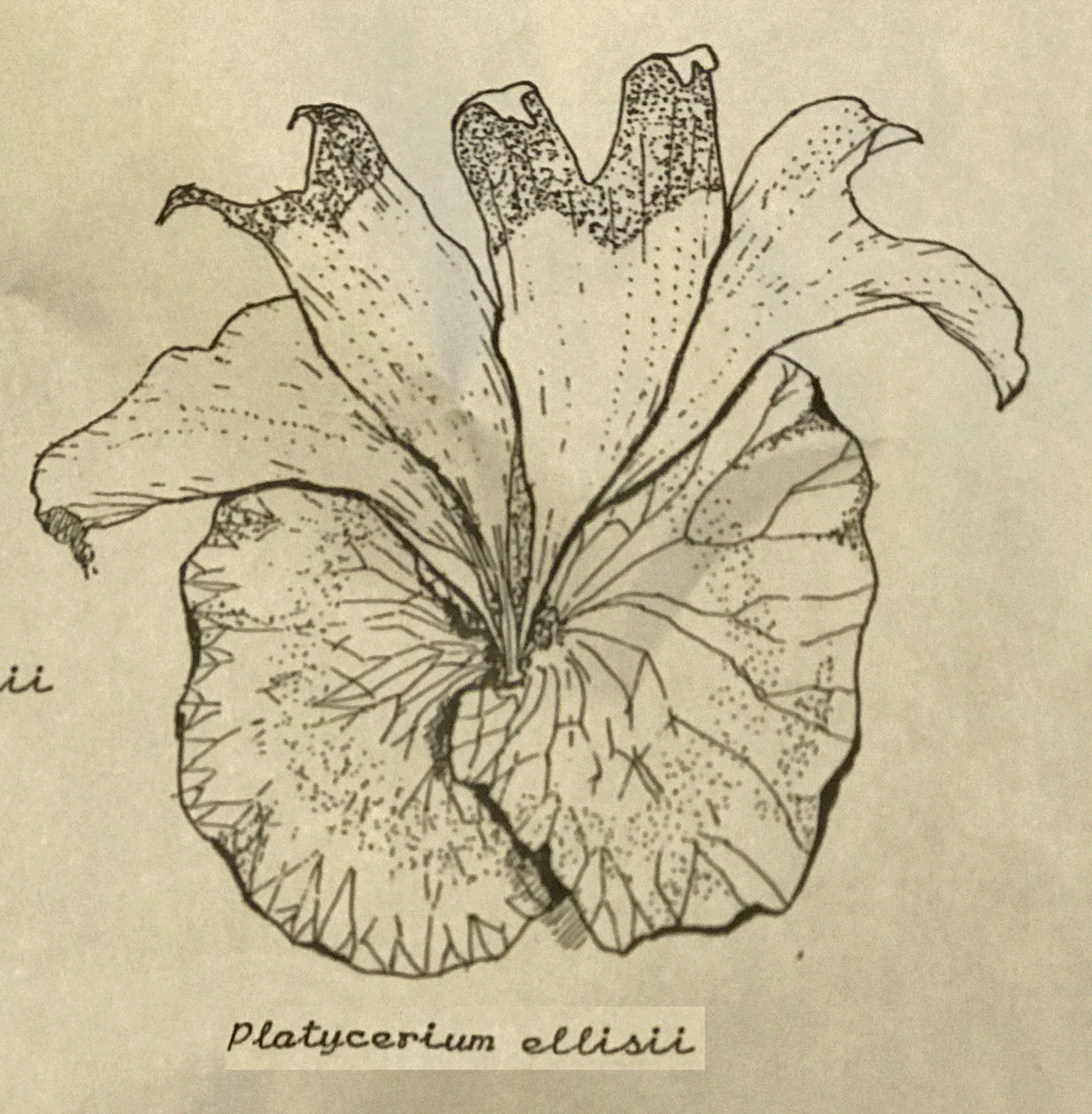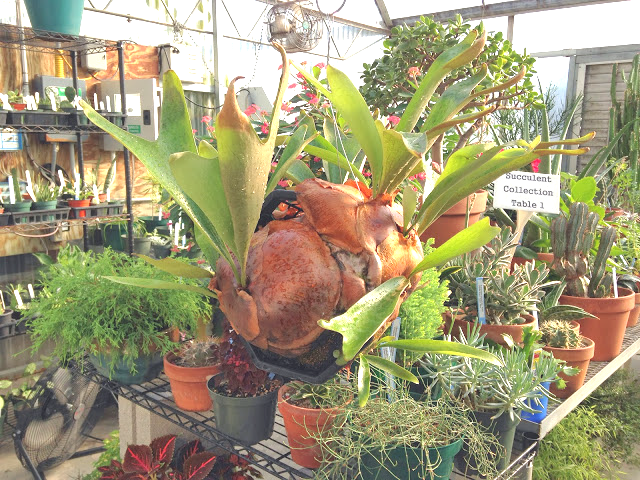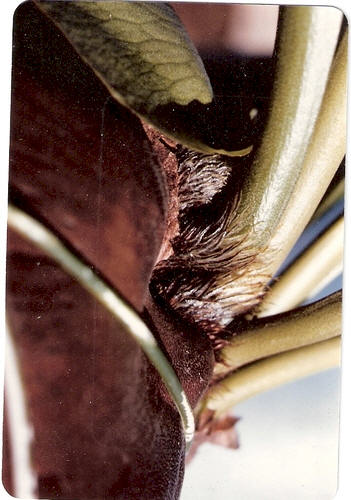|
Platycerium ellisii |
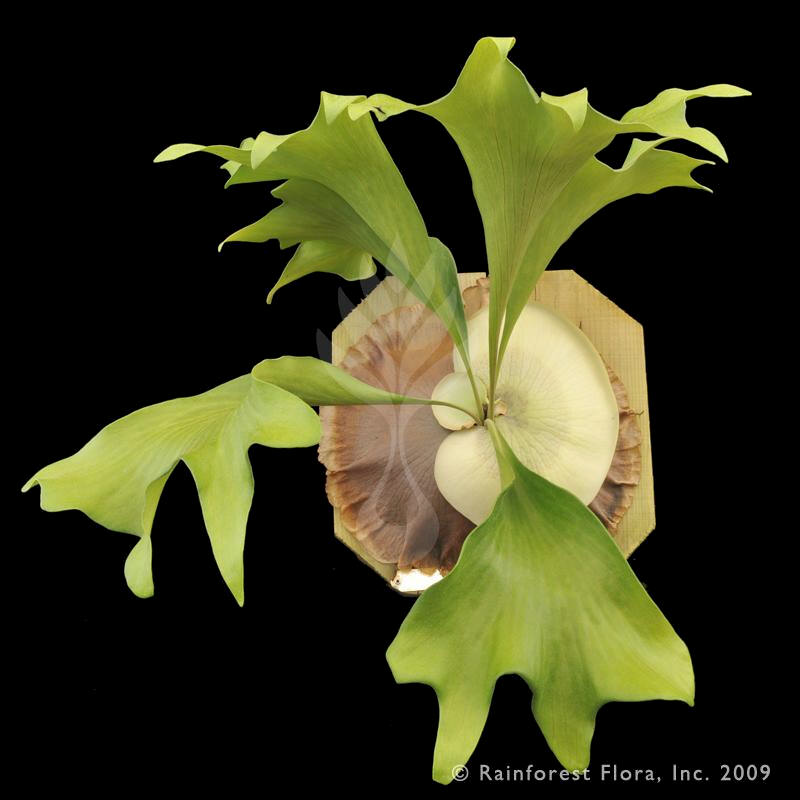 The
P. ellisii is closely related to P. alcicorne.
They have the same yellow-green color, waxy coating, and they both
tend to grow round shield fronds in the spring and early summer.
The fertile fronds grow during the late summer and fall. In the
fall, their shield fronds begin turning a very dark brown near the
center, gradually moving to the edge. The fertile fronds are
wide and divided into only two points near their tips. There is
a cultivar, P. ellisii "diversifolium" which has extra tips on
its fertile fronds, and a third form which can have fertile fronds 8
inches across and 34 inches long. The
P. ellisii is closely related to P. alcicorne.
They have the same yellow-green color, waxy coating, and they both
tend to grow round shield fronds in the spring and early summer.
The fertile fronds grow during the late summer and fall. In the
fall, their shield fronds begin turning a very dark brown near the
center, gradually moving to the edge. The fertile fronds are
wide and divided into only two points near their tips. There is
a cultivar, P. ellisii "diversifolium" which has extra tips on
its fertile fronds, and a third form which can have fertile fronds 8
inches across and 34 inches long.P. ellisii is unique from other platys in their shield fronds develop wide spaces up to an inch between the shield fronds. Roy Vail suggests stuffing sphagnum moss in these spaces to help retain water. The shield fronds are not a good storage vehicle for water, and the fertile fronds are thin, so the P. ellissii must require a high humidity with solid shade. Roy Vail suggests the function of the shield frond space is unknown, but it appears it needs to dry out quickly if excessive rain is present. Since it dries out quickly, it supports the idea that platys get a lot of their moisture from dew and high humidity. The Platycerium ellissii is challenging to grow well in cultivation |
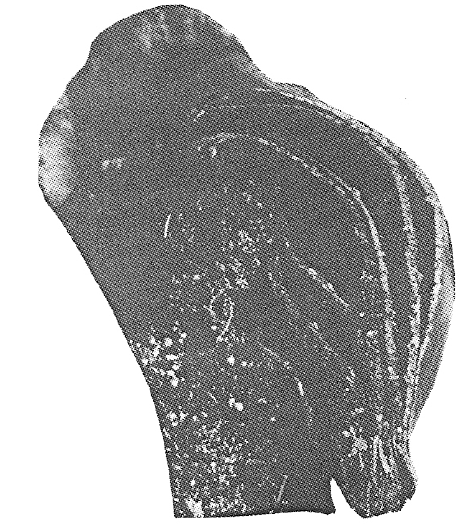
The image on the left is a cut away of the shield frond showing the enormous gaps between the shields. This configuration is unique to only P. ellisii. The space makes it difficult for the shield fronds to retain water as they will dry out fast. However if they are native to a wet rainy area like the mangroves of eastern Madagaagar where the humidity is always high, the space might prevent rot from killing the P. ellisii. Another argument is that the space provides a nice home for insects that die and provide nourishment for the plant.
The photo on the right is a cut away showing the bud. Not sure what the white arcing line is from the bud to the upper left is. I am checking it out. My thoughts are it is a white mounting wire. |
|
[ Plant Glossary ] |
